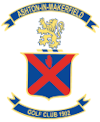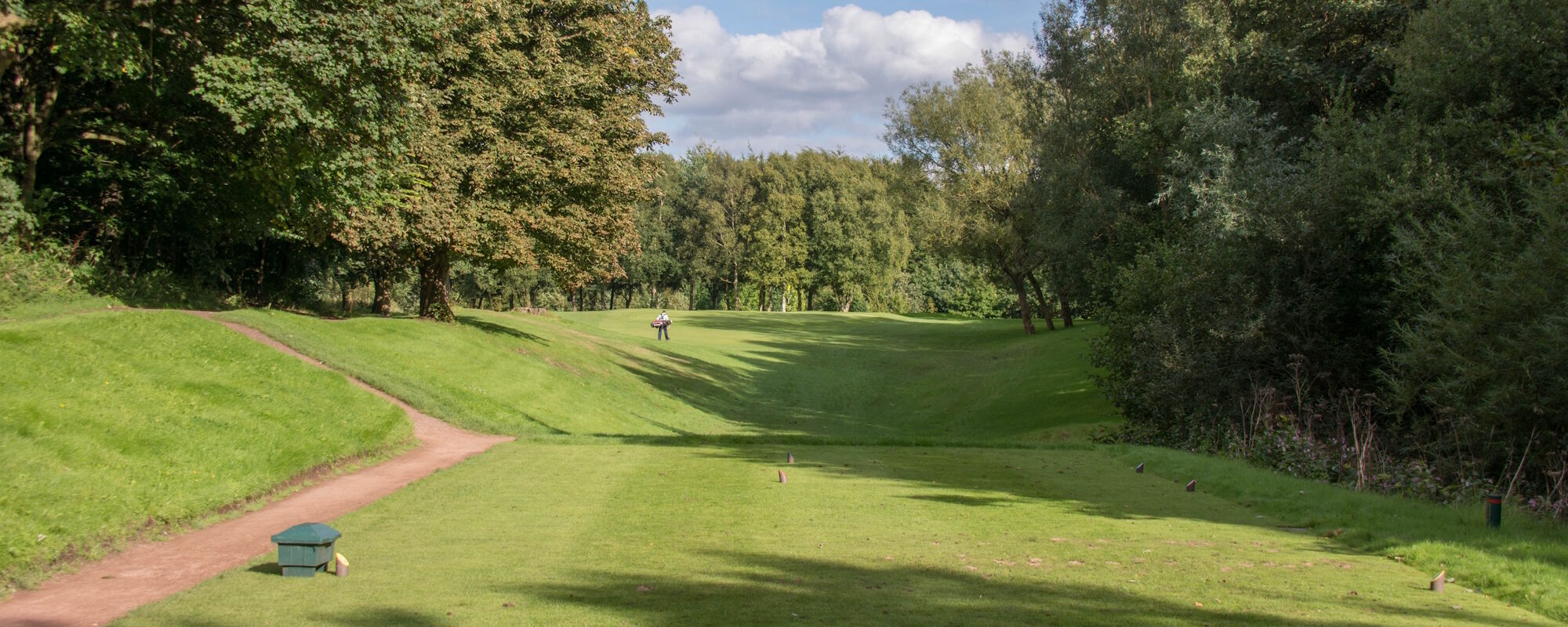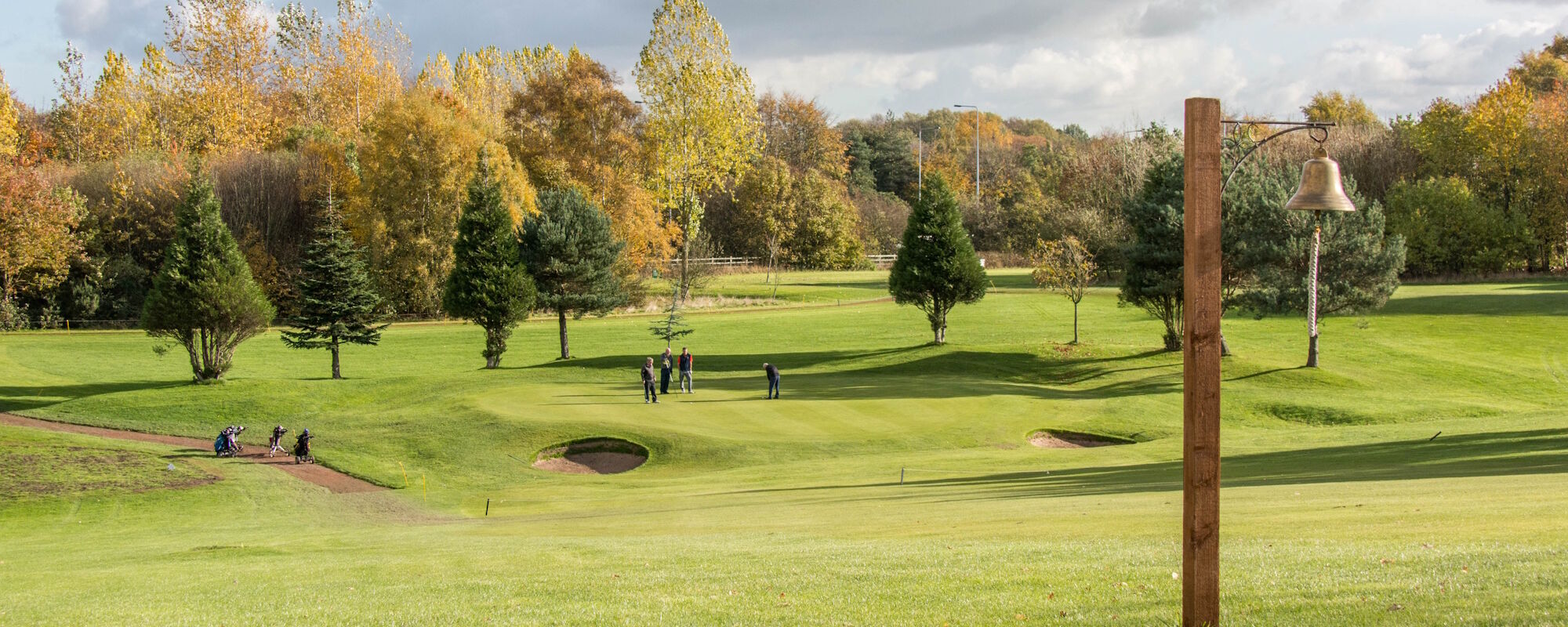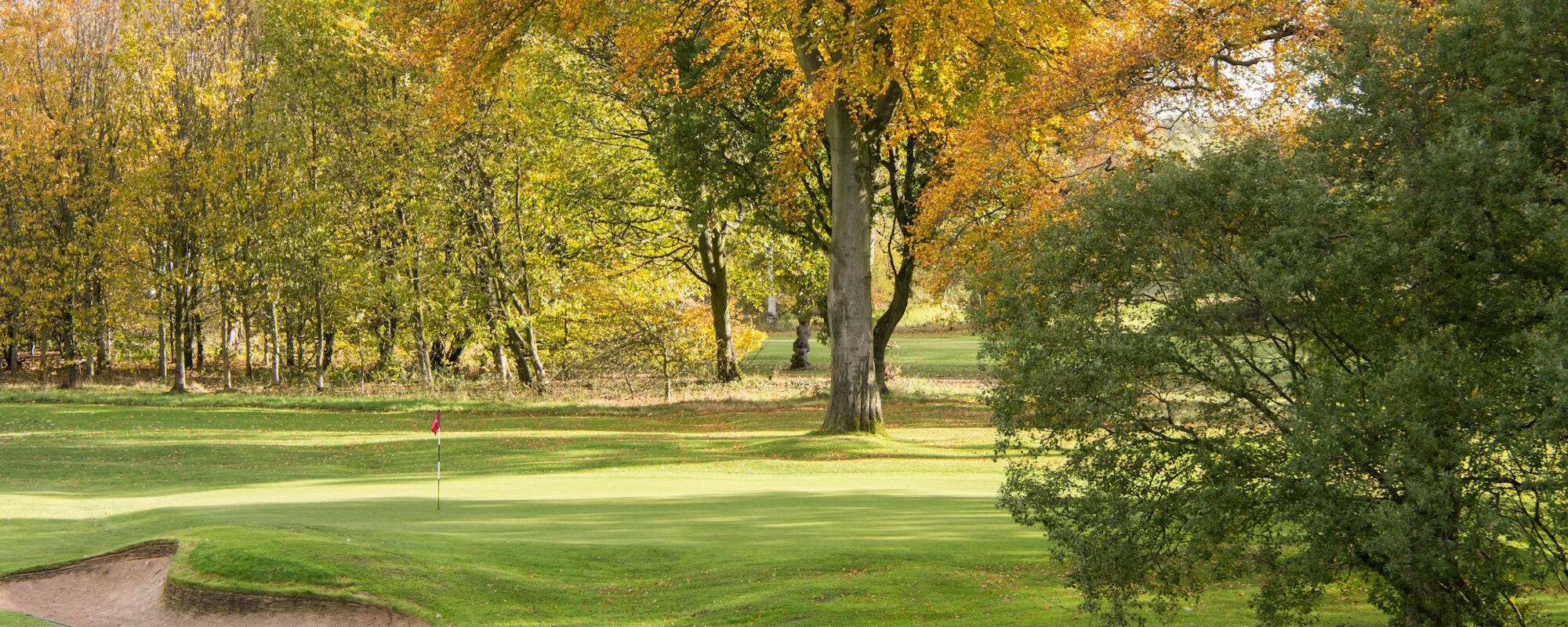The History of Ashton-in-Makerfield Golf Club
Long time cricketing pals Tom Mayall and Andrew Molyneux were discussing their fragile sporting futures against a backcloth of creeping age.
Sadness tinged Tom's voice as he said quietly: "The bottom line is that we've both got too old for cricket." "Tell you what," replied Andrew decisively, "let's take up golf and see if we can spoil a good walk.""We can do better than that," declared Tom. "You know there's been talk for a good while about starting a golf club for staff at the Garswood Hall Collieries. Maybe now's the time to do it."I'll go along with that," said Andrew Molyneux and they both laughed.
So it was that together with a small group of enthusiasts, the two old friends gave birth to the Ashton-In-Makerfield Golf Club in the second year of the 20th century.

The 1906 clubhouse that replaced the building destroyed by fire in January of that year. The first meeting in connection with the formation of the club took place on February 18, 1902, with some 15 enthusiasts attending. Andrew Molyneux was appointed Captain. A small clubhouse was erected as early as April of that year and members rallied round the two pioneers. Among those who formed a steering committee, in addition to Messrs.
Tom Mayall who was elected secretary, and the Captain, were J.H. Edmondson, W.A. Gilby, R.H. Bell, R. Cunliffe, J.W. Mayall, L. Law, and R.H. Edmondson (Managing Director of the Garswood Colliery company) who was elected President.

The steely "Dunkirk Spirit" that typified those early members at Bryn stood the club in good stead in the face of several disasters. The first of these struck only four years later when in January 1906 the first clubhouse was gutted by fire.
Some members, naturally, wrung their hands in despair as the crackling flames consumed the very heart of their beloved golf club; others inspired by the irresistible "Old Bryn resolve," set to with a will and within three months a new, bigger clubhouse was brought into use. However, the dangers inherent in occupying colliery land surfaced in the late 1950s when opencast mining reduced the Old Bryn course from nine holes to six.
Without being over indulgent, Ashton members accepted a generous offer from the Dean Wood club of courtesy of the course Monday to Friday. A similar offer was made by Haydock Park Golf Club.
But the thunderclouds had gathered over the Old Bryn Course - and in the early 1960s they burst with devastating effect. The mighty Lancashire County Council announced without warning that they intended to develop the Old Bryn course and surrounding land and would if necessary invoke a Compulsory Purchase Order to achieve their aims.
That decision brought on the Club's biggest dilemma to date. Now even the members' most steely resolve would be put to the test. This was the end for the Old Bryn course. Ashton Golf Club would have to find a new home - whether they liked the idea or not.
A silver lining among the dark clouds was the fact that the club had been fortunate enough in 1946 to have purchased the Bryn course land from the Garswood Hall Colliery at the original price of £750. The fact that the Club owned the land when the Lancashire County Council moved in was vital in that it enabled the Club to negotiate compensation totalling £28, 900.

Tom Mayall
Andrew Molyneux
Co-founders of Ashton In Makerfield golf club.
Had they not been the owners, compensation would have been minimal and Ashton Golf Club would have ceased to exist. Members' feelings about the enforced move were mixed. Many harboured fond memories of humble, homely, happy Bryn where everybody knew everybody else-and rarely passed without a cheerful word. They remembered how, late at night, the last member out of the clubhouse locked up and hung the key on a nail in the toilet; they recalled how members, working to a rota, carried out various duties in the clubhouse in the service of the general membership and they remembered the congenial atmosphere engendered by a roaring open fire.
On the other hand, there were those who relished the idea of leaving the Old Bryn site with its doubtful environment, ugly slag tips and inadequate facilities. The search for a new home to replace Old Bryn created anxious times for both officials and members. The Club Captain and Council were involved in numerous protracted meetings. But not for the first time, many of those anxieties were transcended by the members' unique determination that made light of what initially appeared to be insurmountable barriers. "We've got to move across town, so lets' get on with it", was the members' battle cry, one member, Harold Winstanley, recalls. Eventually agreement was reached with Lord Gerard to buy 60 acres of his Garswood Hall Estate for £5000 - an unbelievable bargain.
When the move to Garswood Park got under way in 1965 it was a unique sight to see senior members of the club travelling through Ashton in an open truck, transferring furniture and equipment to Garswood Park in time for opening day. The County Council had forbidden the Club to remove any turf from Bryn, but when residents of the Mucklow housing estate started turfing their lawns, the Club decided to join in and a small quantity of turf was transferred to Garswood Park. The top inch of turf was pure coal dust accounting for black feet and clothing after a game of golf at Bryn.








